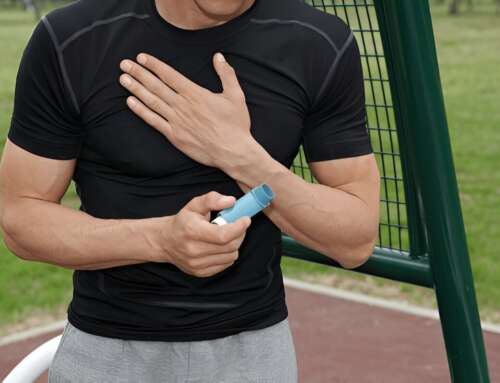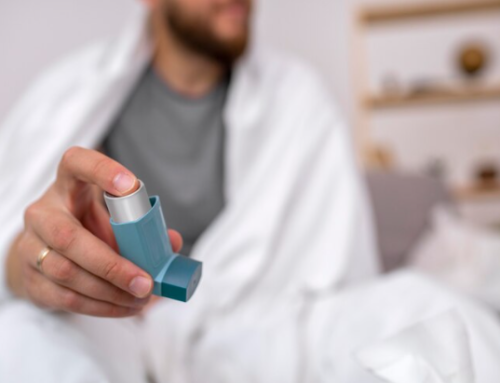 The Florida Asthma, Lung and Sleep Specialists Present: A Short Story of Asthma on the Free-way
The Florida Asthma, Lung and Sleep Specialists Present: A Short Story of Asthma on the Free-way
In the 94 degree heat of gridlocked traffic, on a Los Angeles free-way, a little girl stared out of the window of her Daddy’s car. She squinted to see through the muggy air and green-gray dust of eight lanes of stalled cars and trucks.
She leaned her head against the window of the 1957 red Chevy convertible. “I don’t feel so good, mommy,” she gasped, as she began to cough and wheeze.
Little Lungs Can’t Play in Traffic—or Breathe
The mother calmly handed her daughter her asthma inhaler. Daddy glanced over at the mother, concern arching his eyebrows. “Should I put the top down?” He asked. Mother yelped, “Are you crazy? Can’t you see it’s the air that is poisoning her?
As she wheezed, the little girl thought of her pet gold fish, deprived of water. Now, like him, she gagged on air.
The gridlock broke and the family sped away from the choking fumes, exiting the city. Soon, it became safer to breathe and the little girl gave her “wheezer” back to her mom.
Back in those days, even lung specialists did not know the details behind the effects of diesel exhaust particles from traffic pollution. Likewise, there were very few air pollution laws.
New Study On Diesel Exhaust
Now, we know much more about traffic pollution and young lungs. Researchers at Cincinnati Children’s Hospital Medical Center have recently published the story of IL-17A , diesel exhaust and children’s severe asthma in the “Journal of Allergy and Clinical Immunology.”
“A new study shows that exposure to diesel exhaust particles from traffic pollution leads to increased asthma severity in children.”
However, the study went deeper than obvious cause and effect. After all, in the opening story, even the child’s mother could tell the exhaust was triggering her daughter’s asthma attack. Research scientists discovered that the increase in asthma severity was in reaction to “increased blood levels of IL-17A.”
Now we know that IL-17A happens to be “a protein associated with several chronic inflammatory diseases in children with high diesel exposure.”
Four Amazing Revelations from Mice and Children
1. “The recent research, conducted in mice and in humans, showed that neutralizing the protein, IL-17A prevented airway inflammation.”
2. The scientists concluded that neutralizing IL-17 A could counteract the asthma-promoting effects of traffic-related air pollution.
3. In practice, neutralizing the IL-17 was especially effective in “ highly exposed, severe allergic asthmatics,” like the little girl in the story above.
4. Gurjit Khurana Hershey, MD, PhD, director of asthma research at Cincinnati Children’s was the senior author of the study.
Dr. Hershey’s Research Methods for Mice and Children
Dr. Hershey’s method for studying children involved 235 children and teens diagnosed with the asthma. The research scientists simply used the child’s address to estimate how much diesel pollution exposure could be based on daily diesel traffic near their homes.
The mice in the experiments were exposed to diesel particles and dust mites. Just as the researchers predicted, “In children with asthma, diesel exposure was associated with more frequent asthma symptoms and increased IL-17A blood levels.”
The mice were divided into two groups. One group was subjected to both diesel and dust mites. The other group was exposed only to dust mites. Florida Lung, Asthma and Sleep Specialists ask, “Can you guess which mouse group had the most severe asthma? The Diesel and dust breathing group, of course!
Not only did they have more aggressive asthma attacks, but there in the mouse blood was the tell-tale IL-17A, and when it was neutralized, the airway inflammation was reduced.
The mice who inhaled the dust mite and diesel fumes exhibited, “more severe asthma in mice compared to dust mite exposure alone.”
Amazingly, scientists discovered that when the protein IL-17A was neutralized in mice, “it alleviated airway inflammation induced by diesel exposure.”
Dr. Hershey stated, “Blocking IL-17A may be a useful strategy to counteract the effects of traffic-related air pollution, especially in highly exposed allergic asthmatic children.”
Dr. Hershey was not the first researcher interested in the role of IL-17A in asthma. “In some cases, severe asthma even responds poorly to steroids. Several studies have suggested a central role of IL-17 (also called IL-17A) in severe asthma. Indeed, high levels of IL-17 are found in induced sputum and bronchial biopsies obtained from patients with severe asthma.”
Sometimes going from pointed scientific study to proper treatment development takes a number of years. Thus, the Florida Lung, Asthma and Sleep Specialists will watch for more breaks in regard to IL-17A, in hopes the discovery can some day be engineered into a treatment to ease the breathing of childhood asthma suffering.
Post Script: Do you want to know more about the little girl in the opening story? Her family moved away from L.A., and her little lungs began to heal. Of course country life brought a whole new raft of allergens, but none so toxic as the dark oily air of the mean metro streets of the 1950’s and 60’s. It’s ironic that she grew up to write the blogs for Florida Lung, Asthma and Sleep Specialists.




